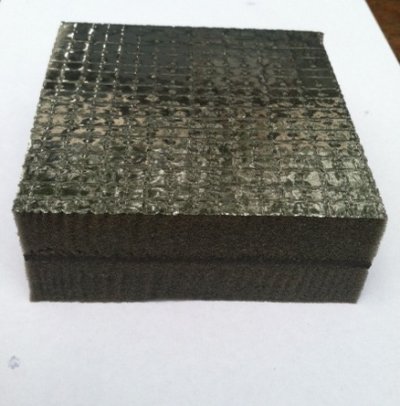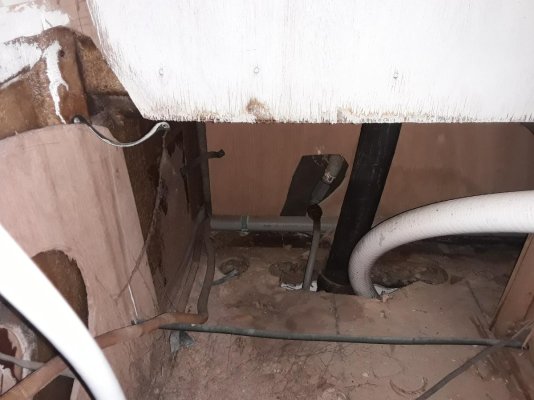I've been slowly modifying to reduce noise. I bought a 20' roll of 1# mass loaded vinyl (for a 30' boat) and placed it around, including right over the length of my teak cabin flooring. Makes for some inconvenience when removing hatches and didn't make as much difference as I was hoping. I have been measuring noise with a free app called Decibel X. Because I had so much MLV, I also used it to line compartments under the dinette seats, cabinets on the floor, anything between me and the engine.
What I found was that the biggest bang for the buck was covering actual pathways between me and the engine. Over the years, modifications to the engine room had compromised the original sound proofing. Installation of a new head resulted in several large openings, including one to slide a holding tank in from the engine room to underneath the floor in the V berth. Also some new holes in the forward ER bulkhead to run hoses. These holes were underneath the sink in the head, a cabinet that had louvered doors and let sound pass right through. Closing the door to the head, even though it also has louvers, made a noticeable difference in the engine sound in the main cabin.
I also had noise coming from under the galley sink in to the main cabin. I removed some of the inside cabinets and found that a new sink and drain had resulted in some extra holes in the floor, which leads directly into the engine room. The holes looked like the a one-armed attempt with a Sawzall. The biggest ragged hole was three times larger than necessary and the original was abandoned and left open. You can see in the picture that the original floor had about two inches of fiberglass sound insulation between the cabin floor and the engine room ceiling, plus the regular sound panel on the ER ceiling.
With MLV over the floor and most of the galley cabinet base, it became more obvious where the noise was coming from. The most engine noise was coming from behind me in the galley. I stuck my phone back in there and took the picture below. Then I knew that I had a project. I had to take apart some of the cabinet, which had been done when the mess was created, but they hadn't bothered to address the issue of sound.
In doing my research, I came across site that talked about the installation of sound proofing and how covering actual pathways to the noise was the most important starting point. It gave an example where Db measurements were taken from a 4 x 8 panel with a hole in it the size of a quarter. Plugging the hole made more difference than covering the entire panel with soundproofing but leaving the hole open. Get those little sound pathways done first.
Here's a picture of the "holey" mess under my galley sink. I first stuffed the holes with rockwool, then cut MLV sheets to seal around the hose penetrations with circles cut out to match the hose diameters. Rockwool is probably not the best in case it got wet, but it is what I had. In the future, I will probably get my
"professional" foam gun and seal up all of the little openings from engine room to living area. Even seemingly tight penetrations from hoses and wiring could probably benefit from a little spray foam. I've used it in the past on other projects and future modifications or repairs are simple because the spray foam can be easily torn out and redone.




